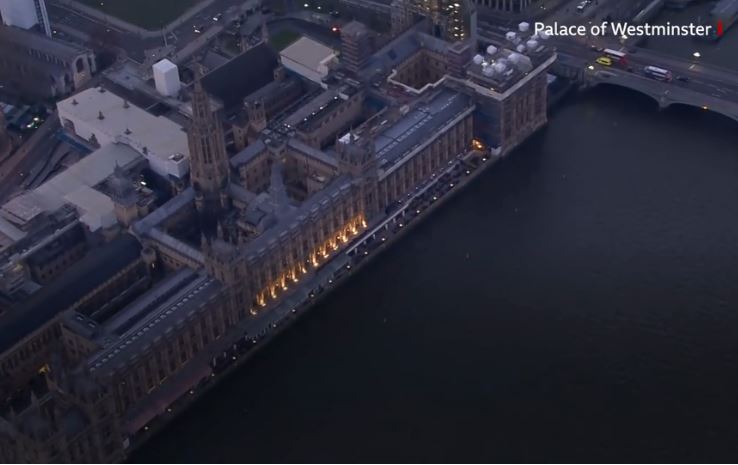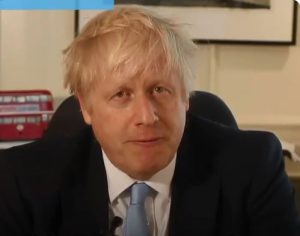
31 January 2022. The Telegraph, UK: ‘Vote Of No Confidence: What Is It And What Does It Mean For The Prime Minister?’ By Harry Yorke.
Boris Johnson is facing the largest threat to his premiership to date as calls mount for his resignation, with reports growing of letters of no confidence being handed in – but there is only one question being asked in Westminster: will they reach 54?
It is the so-called “magic number” of letters that need to be submitted by disillusioned MPs to trigger a no-confidence vote and determine whether the Prime Minister remains in office.
Should the threshold be reached, recent history suggests Boris Johnson’s fate could be decided within hours rather than days.
However, even if the Prime Minister were to survive a challenge, it is by no-means certain that he could continue to cling onto power having lost the support of so many of his backbenchers.
How can Tory MPs force a leadership challenge?
In order to trigger a confidence vote, 15 per cent of Conservative MPs need to write to Sir Graham Brady (pictured below), the chairman of the backbench 1922 Committee.
However, Sir Graham is famed across Westminster for refusing to discuss the number of letters sitting in his office, so much of the coverage on this subject is largely down to informed speculation and off the record briefings from MPs who claim to have submitted their own.
Despite this level of secrecy, there is now a growing belief that Sir Graham is close to receiving the 54 letters required.
That sense of inevitability has only intensified since it emerged on Tuesday 25 January that 20 Tory MPs elected in 2019 met to discuss Mr Johnson’s future.
Some believe the partygate report published by Sue Gray earlier this week could also act as a catalyst for the final letters to go in.
The initial findings, which were released onto gov.uk, consists of 12 pages and reveals that 12 gatherings are subject to Metropolitan Police investigation.
If the 54 threshold is reached, Sir Graham will then meet Mr Johnson to inform him and to discuss the timing of a vote. Once the pair have finalised the details, an announcement will be made publicly.
At this point events could move rapidly. This has been the case in the past, with Theresa May facing a confidence vote on 12 December 2019 – the same day that the threshold of 48 MPs was reached.
What happens when a no-confidence vote takes place?
The contest is a simple up-down vote on whether Mr Johnson should stay in post.
This time round a straight majority of one is required to force the Prime Minister from office.
However, the danger for Mr Johnson is that the vote is a blind ballot, meaning ministers and others on the Government payroll who have until now bit on their tongue may finally move against him.
Should the rebels fail to muster this number, Mr Johnson will remain in post and no new vote can be triggered for 12 months.
If the PM wins is he definitely safe?
Again, the ousting of previous Conservative leaders suggests Mr Johnson will still be extremely vulnerable even if he clings on.
This was true of Margaret Thatcher, who resigned several days after surviving the first round of the leadership challenge held on November 20 1990.
Although she secured 204 votes to Michael Heseltine’s 152, her failure to secure a 15 per cent winning margin meant she would have faced a second ballot had she chosen to fight on.
While the rules have since changed, Mrs May also quit several months after surviving a no-confidence vote, despite the fact that MPs could not trigger a contest for 12 months.
Her departure stemmed primarily from the fact that in the absence of a formal contest, her opponents in the party had found other routes to express a lack of confidence in her.
In Mrs May’s case, this came in the form of a looming no-confidence vote by the National Conservative Convention, a body representing the voluntary Tory association chairs, regional officers and other branches.
In April 2019, more than 65 Conservative Association Chairmen signed a petition calling for an extraordinary general meeting of the NCC. Mrs May resigned the following month (below), before a vote could be held.
With a recent poll suggesting 41 per cent of 2019 Tory voters want Mr Johnson gone, it is not inconceivable that he could also fall foul to the same tactics.
Rules are there to be broken
The other clear threat to Mr Johnson is that, even if he wins a confidence vote, another could be held before his 12 months are up – but there is nothing to stop the 1922 Committee from changing its own rules, which are not in the public domain.
The Committee’s executive officers are at liberty to amend the rules at any time, providing they consult the Conservative Party Board.
What happens if Boris Johnson goes?
A two-stage election will take place. The first phase will be determined behind closed doors in Parliament, with Conservative MPs putting forward their names.
Their colleagues will then hold a series of internal ballots, with those who fail to secure a certain number of votes eliminated after in each of the first two rounds.
After that, the candidate who comes last is eliminated until there are only two candidates remaining.
Once the final two are decided the contest will then be thrown up to the Conservative Party membership.
While the length of the contest will be decided by the 1922 Committee, a period of several weeks is expected to be allocated to allow the two candidates to hold hustings across the country.
The pair will then gather at a final count, where the majority winner will be declared the new Tory leader – and by extension the prime minister.




